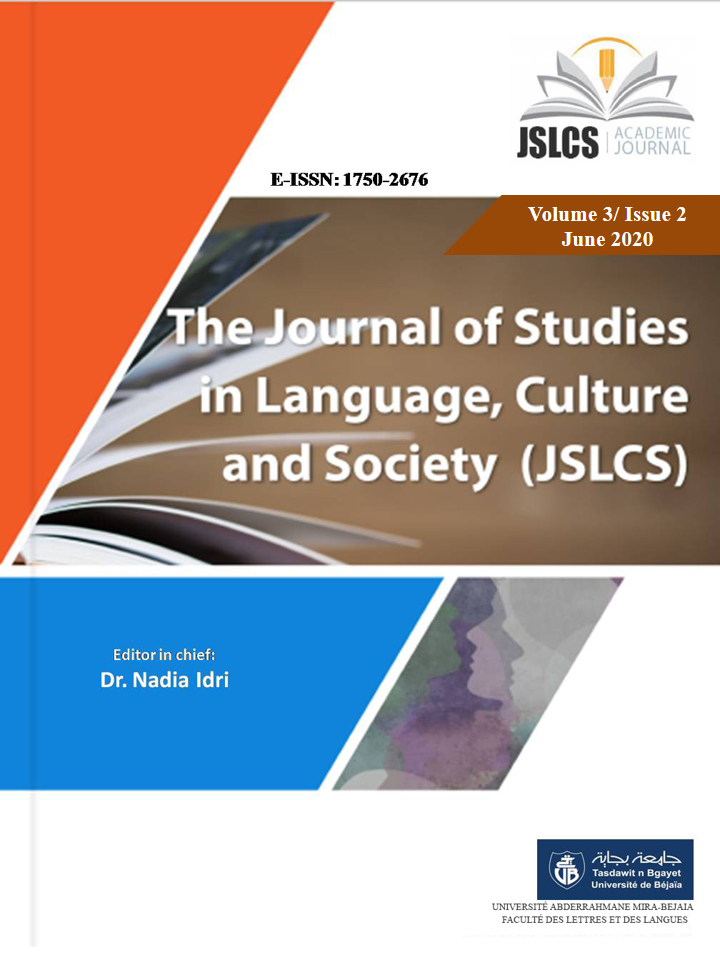Investigating The Potential Of The Flipped Class In Fostering Students’ Content Understanding And Facilitating Differentiation
Keywords:
content understanding, differentiated strategies, engagement, the flipped classAbstract
Academic communities in many parts of the world have adopted various digital innovations as educational, pedagogical tools to remove the barriers that have characterized the traditional way of teaching and learning. The flipped class is an exemplary outgrowth of this attraction for teaching assisted by technology, which the Algerian higher education system can exploit. In essence, flipping the classroom is the model in which the lectures are moved from the usual institutional environment to a web-based platform where learners can access them at home. This study seeks to explore the potential of the model to advance students’ content understanding, elevate engagement, and allow the use of differentiation strategies. To achieve these objectives, a mixed-methods research design, including qualitative and quantitative methods, was employed to collect relevant data for this research study. The research tools used were: an observation, an experiment, and a questionnaire for the students. The findings revealed that inverting a classroom improves understanding of concepts and encourages learners’ engagement. The results showed that it is possible to differentiate the instruction through reversing the classroom.
References
Basal, A. (2015). The implementation of a flipped classroom in foreign language teaching. Turkish Online Journal of Distance Education-TOJDE, 16(4), 1302-6488. Retrieved from http://tojde.anadolu.edu.tr
Bergmann, J., & Sams, A. (2012). Flip your classroom: Reach every student in every class every day. International Society for Technology in Education / ISTE.
Blaz, D. (2016). Differentiated Instruction: A Guide for World Language Teachers. New York: Routledge.
Dosch, M., & Zidon, M. (2014). The course fit us: Differentiated instruction in the college classroom. International Journal of Teaching and Learning in Higher Education. 26(3).
Gardner, H. (1993). Multiple intelligences: new horizons. New York, NY: Basic Books. Horn, M. (2016, March 03). The transformational potential of flipped classrooms. Retrieved from http://educationnext.org/the-transformational-potential-of-flipped-classrooms/
Johnson, G. J. (2013). Student perceptions of the flipped classroom (Master’s thesis, the University of British Columbia).
McCarty, W., Crow, S. R., Mims, G. A., Potthoff, D. E., & Harvey, J. S. (2016 May). Renewing teaching practices: Differentiated instruction in the college classroom. Journal of Curriculum, Teaching, Learning and Leadership in Education, 1(1).
Ryan, R. M., & Deci, E. L. (2000). Intrinsic and extrinsic motivations: Classic definitions and new directions. Contemporary Educational Psychology, 25, 54-67. Retrieved fromhttps://mmrg.pbworks.com/f/Ryan,+Deci+00.pdf
Sternberg, R. J., & Spear-Swerling, L. (1996). Teaching for Thinking. Washington, DC: American Psychological Association.
Tétreault, P. L. (2013). The flipped classroom: Cultivating student engagement (Master’s thesis, University of Victoria). Retrieved from https://dspace.library.uvic.ca
Tomlinson, C. A. (2001). How to Differentiate Instruction in Mixed-ability Classrooms. Upper Saddle River, NJ: Pearson/Merrill Prentice Hall.
Tucker, B. (2012). The flipped classroom: Online instruction at home frees class time for learning. Retrieved from http://educationnext.org/files/ednext_20121_BTucker.pdf
Carbaugh, E. M., & Doubet, K. (2015). The Differentiated Flipped Classroom: A Practical Guide to Digital Learning. SAGE Publications.








